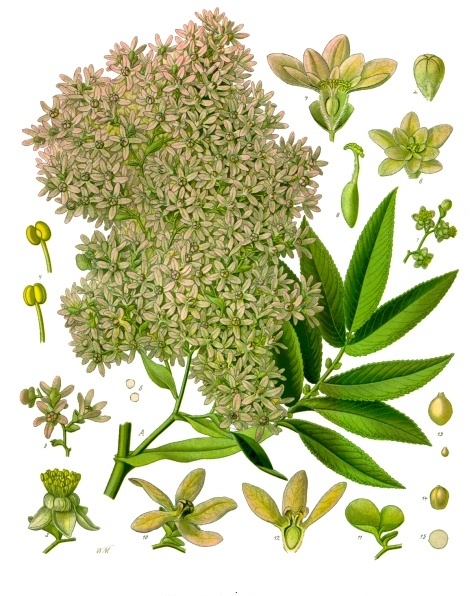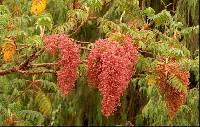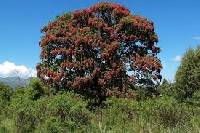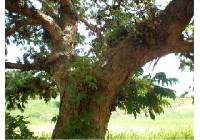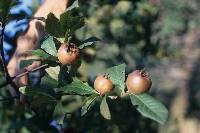
Bark: Red-brown and thick bark which is flaking irregularly. Branchlets are covered by silky brown hairs and marked with rings of leaf scars.
Leaves: Compound (imparipinnate) leaves up to 40 cm long with winged leaf stalk and 7-17 leaflets. Leaflets are bright green above, silvery and hairy below.
Flowers: Female flowers are greenish or white when young. turning reddish when mature. Male flowers are feathery, orange-white, produced in large attractive masses to 60 cm long. The male and female flowers are produced on different trees.
Fruits: Small. dry and one-seeded fruits.
Geographical distribution and ecological requirements: H. abyssinica is a tree extending from Ethiopia. Sudan. through East and Central Africa south to Malawi and Zambia. It is found in montane rain forest. upland evergreen bushland, often above moist bamboo-thickets. from 2400-3600 m. In Rwanda. this species has been recorded in Nyungwe and Volcano National Parks and Mukura forest reserve from 2150-2750 m where rainfall varies between 548-2130 mm.
Uses: Timber. firewood. charcoal. medicine (bark and roots), soil conservation, ornament, poles, carvings. flooring, mulch, firebreak, green manure and bee forage.
Propagation: This species is propagated by seedlings and wildings.
Seed information: There are 400000-500000 seeds per kg. Germination rate reaches 40-60 % after 2-3 weeks.
Seed storage and pre-germination treatment: Seed pre-treatment is not necessary. Seeds can be stored for 6-12 months.
Management: This species should be pruned. Pollarding is also possible.
Remarks: H. abyssinica is suitable for Agroforestry practices, as it does not compete with crops if it is pruned to prevent over shading. The wood is dark red, hard and useful for furniture but attacked by borers.
Copyright (c)2020. Data portal development has been supported through the cooperation of Biocultural Diversity International and the National Herbarium of Rwanda (NHR)
at the Center of Excellence in Biodiversity and Natural Resources Management (CoEB).
We are currently actively seeking additional funding for this project.
Powered by Symbiota software with site management and data curation support by Michael B. Thomas, PhD. Usage Policy.






